Chapter 11
Making and Receiving Calls
IN THIS CHAPTER
![]() Understanding modern voice communication
Understanding modern voice communication
![]() Making and receiving calls in Teams
Making and receiving calls in Teams
![]() Setting up Teams with a new or existing phone number
Setting up Teams with a new or existing phone number
![]() Getting comfortable using Teams as your phone
Getting comfortable using Teams as your phone
Communicating with others using our voice is a basic human activity that began when man first walked the earth. Doing so with someone at a distance has only been an option for most people since the late 1800s with the advent of the telephone. Today, Internet apps such as Skype have changed the game for voice communication, and Microsoft Teams is the next evolution.
In this chapter, you discover how Teams can act as the phone system in your organization. You learn how to make and receive calls using Teams. You find out how phone numbers work in Teams and how you can make calls without them. Also, you learn a bit about the history of phone numbers and how you can set them up through Teams to work with the traditional phone system.
Making Phone Calls in Teams
In our office in Seattle, Washington, we don’t have a phone system or even any traditional phones. Instead, we have a high-speed office network that is connected to a fast Internet connection, which we use to make calls through our computers and electronic devices. When we want to call someone else in the office, we use Teams. When we want to call someone outside the office using a regular phone number, we also use Teams.
The Internet was invented to solve the problem of relying on a single route between two points on a network. In addition, the Internet uses digital information, known as packets, to send information over the network. To optimize voice communication over this digital network — the Internet — a special protocol was invented called Voice over Internet Protocol (VoIP). Today there is a weird mashup of these two networks, and the PSTN terminology still refers to using the traditional phone network, but today a mix of Internet connections is intertwined within it.
In general, you can use only VoIP technology if you call someone from Teams on your computer over the Internet, and the other person answers using Teams. No phone number is involved. When you need to use an actual phone number, you need to go through the regulatory system that was associated with the PSTN network, and this involves phone companies and the federal regulatory bodies. I can envision a day when everyone has high-speed Internet connections on all of their devices (think Elon Musk and his Starlink satellite Internet system) and phone numbers disappear. For the time being, though, we still need phone numbers to reach people who are not using a VoIP product such as Teams, Skype, Hangouts, Slack, Zoom, or countless others.
Calling another Teams user
If you have ever used a software app, such as Skype, to call another person using the same app, then you know how easy it is to communicate using voice over the Internet. Teams follows this same paradigm. You can initiate a call with another Teams user from just about anywhere in Teams. If you can see the name of a person in the Teams app, you can call that person. Just hover your mouse over the person’s name and select the Phone icon, as shown in Figure 11-1.
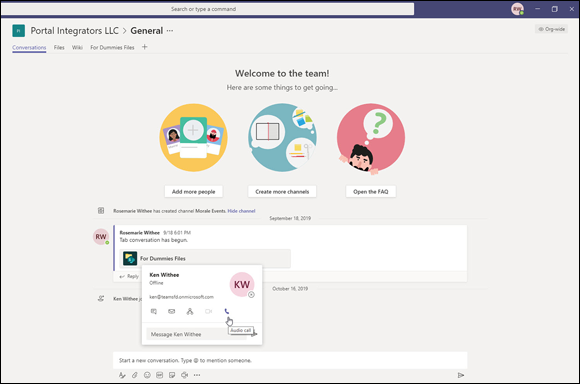
FIGURE 11-1: Calling another Teams user.
Finding the Calls dashboard
In the previous section, you see how communication, including voice calls, is built into the Teams interface (Figure 11-1). Teams also provides a dashboard called the Calls dashboard specifically for voice communication. You open the Calls dashboard by selecting the Calls icon in the left navigation pane, as shown in Figure 11-2. Note that you won’t see the Calls icon in the navigation pane if you have not set up voice in Teams. This is an administrator task, which I cover later in this chapter and in Chapter 12.
The Calls dashboard includes navigational items for speed dial, contacts, history, and voicemail, as well as an area to make a call:
- Speed dial: This screen is where you can set up the contacts you dial frequently. Just as the name implies, it is for speedily dialing a person. I find this particularly handy when I am working with very large organizations and the list of contacts might include hundreds or thousands of people.
- Contacts: This screen contains a list of all your contacts. You can add any type of contact you want here; it doesn’t have to be another Teams user. You add a contact by selecting the Add contact button that appears in the top-right corner of the screen. You then type a name or phone number and Teams automatically starts searching through the other users within your organization and presents you with possible matches based on what you entered. If Teams doesn’t find any matching possibilities, you are prompted to create a new contact.
- History: Your history of incoming and outgoing calls is displayed on this screen.
- Voicemail: Your voice messages are shown on this screen. You can listen to the messages as well as view transcripts of the messages that Teams has already transcribed for you. I use the transcription feature frequently since it takes time to listen to a message, but I can glance at the transcript and know instantly what the message is about and whether it is worth listening to and acting on now or waiting until later.

FIGURE 11-2: Opening the Calls dashboard in Teams.
The Calls dashboard also includes an area in the left navigation pane titled “Make a call” (see Figure 11-2). In this area, you find a Phone icon next to each contact’s name. Click the Phone icon to immediately call that contact. I find this area redundant since you can make a call to any contact by just clicking the Phone icon next to the person’s name from anywhere in Teams. Most of my calls happen from within the channels and chat areas of Teams; I don’t necessarily go to the Calls dashboard. I just hover over a user’s name from wherever I am in Teams and select the Phone icon to start a voice call.
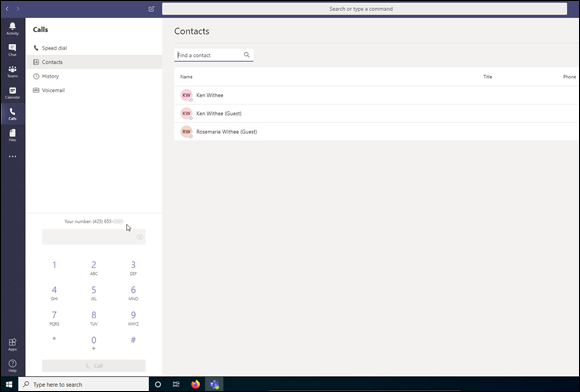
FIGURE 11-3: When a phone number has been assigned to a Teams user, the number shows up on the Calls dashboard.
Receiving a Call in Teams
On the surface, receiving a call in Teams happens the same way regardless of whether the other person initiated the call using Teams or a traditional phone. Your Teams app rings, and you can decide to answer it or ignore it.
Where Teams shines is in the ability to configure what happens when someone calls you. For example, you can set up Teams to route incoming calls to your desk phone between 9 a.m. and 11 a.m. on weekdays, and to your mobile phone at other times. Or you can set it up to ring at whatever device you are active on so that your calls follow you wherever you are. I cover the details of this digital operator functionality in Chapter 12.
Using Teams with Phone Numbers
In Teams, you can call anyone in your contacts list by clicking the Phone icon. However, not everyone uses Teams or the Internet, and so phone numbers persist. And Teams handles them just like you would expect. You dial a phone number from your Teams app, regardless of whether you are using a desktop, a laptop, a phone, or a tablet, and the phone you are dialing rings. Likewise, if someone dials the phone number set up with Teams, the Teams app rings.
I often use Teams to call people from my mobile phone. It is easy to forget that all I really need is Teams and Internet connectivity to make this work. My mobile phone plan has mostly become about getting connected to the Internet. Yes, I get a number from my mobile phone company, too, but I could just as easily get one from Microsoft with Teams or Google with Hangouts or any number of new services. My mobile plan has become my connection to the Internet when I am not at my desk. If Elon Musk carries out his plan to beam down high-speed Internet from satellites with Starlink, then I wonder if anyone will need a mobile plan anymore. Or perhaps cell towers and satellites will compete for our mobile Internet needs.
When a Teams user has a phone number set up, the phone number will appear in the lower-left corner of the Calls dashboard (shown earlier in Figure 11-2). When someone calls the phone number, Teams will ring, and the call can be answered. You can also dial a phone number by entering it into the “Make a call” section.
Adding Phone Numbers to Teams
Many organizations use Teams and pay for a separate phone service. And the bill for phone service for even a small office can be shocking! Microsoft offers phone service through Teams that you can sign up for through the Office 365 Admin Center and set up in the Teams Admin Center. (I cover the Teams Admin Center in depth in Chapter 13 and Chapter 14.) In this section, I outline the steps to sign up for a phone service and start using phone numbers in Teams.
Obtaining a license and dial plan
Licensing is one area that often causes a huge amount of confusion and frustration with Microsoft products. The good news is that for small and medium-sized organizations, Microsoft has recognized this pain and is trying to reduce it. (Large organizations usually have a dedicated account representative.)
At the time of this writing, Microsoft has launched a cloud-based voice plan and license called Microsoft 365 Business Voice in the United Kingdom and Canada, and it is “coming soon” to the United States. Microsoft 365 Business Voice includes all the pieces you need to get started using phone numbers in Teams. It integrates into Office 365, giving you the ability to make phone calls in Microsoft Teams. The Microsoft 365 Business Voice documentation page is shown in Figure 11-4.
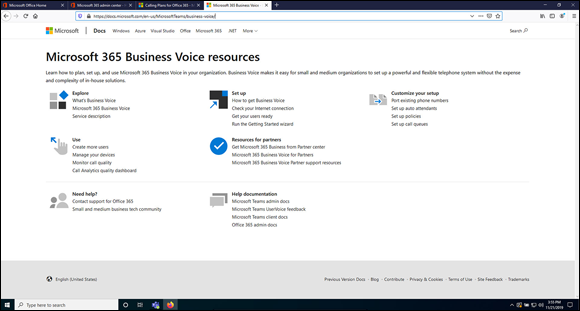
FIGURE 11-4: The Microsoft 365 Business Voice documentation page.
Without using the new Microsoft 365 Business Voice plan and license, you will need to obtain a phone system license and calling plan. When writing this chapter and Chapter 12, I purchased a Microsoft 365 E5 license and a calling plan. However, I am eagerly waiting for the Microsoft 365 Business Voice license to roll out in the United States. If your Microsoft 365 or Office 365 subscription does not include the correct license, you will see an error message when you start the wizard to obtain a new phone number, as shown in Figure 11-5.
You can obtain licensing for various Teams features such as conferencing, toll-free numbers, and calling plans. Check the service descriptions for each license to see what is included. You will find these licenses along with your other Microsoft 365 or Office 365 licenses on the admin site for those services. In Chapter 1, you learn about signing up for a Microsoft 365 or Office 365 subscription. After you log in to your Microsoft 365 or Office 365 dashboard, you will find license information under the Billing section in the navigation pane.
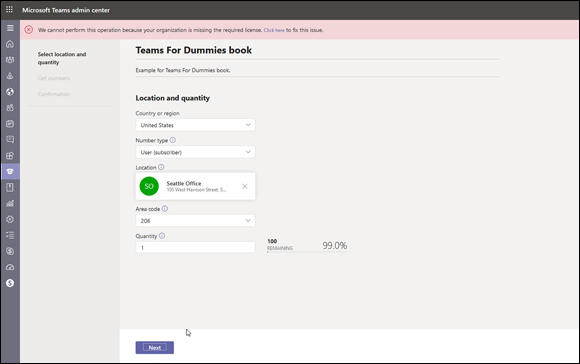
FIGURE 11-5: Without the correct license you will not be able to obtain a phone number.
To add a phone number to a Teams user, you also need to obtain a calling plan. A calling plan is essentially a way to pay for time spent using the Public Switched Telephone Network (PSTN). You will find calling plans for domestic calling and for international calling. If you are familiar with traditional telecommunications, all of this may sound familiar. If this terminology is new, then be thankful you are just learning about it now, when it is becoming simplified with services like Teams.
Much of the appeal of Teams is that you can get up and running in a short amount of time without the need to hire expensive experts. However, Microsoft also offers many features and services specifically designed for large enterprise organizations. For example, Microsoft offers replacement functionality known as Phone System for traditional Private Branch eXchange (PBX) systems. A PBX is a system for routing phone traffic around your organization. A PBX system used to be a large physical device that would take up a small room. The offering from Microsoft is all virtual and lives in the cloud, even though it performs the same functionality.
Signing up for a new phone number
You can request a new phone number for a location and Microsoft will assign one from the available pool of numbers. To obtain a new phone number that you can assign to a Teams user, follow these steps:
- Log in to the Teams Admin Center and expand the Voice option that appears in the left navigation pane.
Choose Phone Numbers, as shown in Figure 11-6.
The Phone Numbers screen opens on the desktop.
- Select +Add in the Phone Numbers screen to start the new phone number wizard.
- Provide a title for the order of the phone number, enter a description, and then select a country or region, as shown in Figure 11-7.
Select the type of number you want to assign.
In this example, I am choosing a basic user phone number (see Figure 11-7). The other options include a dedicated toll and toll-free conference bridge, a toll and toll-free call queue, and a toll and toll-free auto attendant. I cover these options in more detail in Chapter 12.
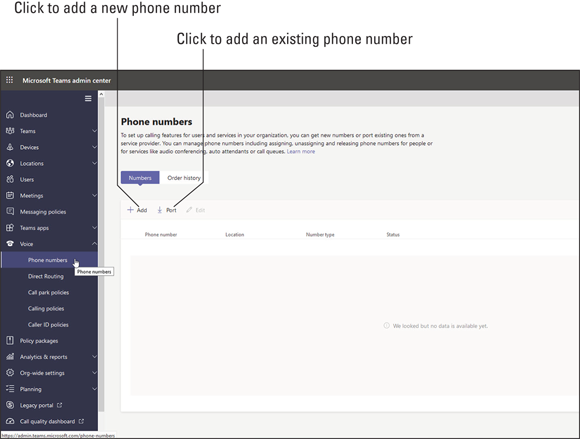
FIGURE 11-6: Open the Phone Numbers page in the Teams Admin Center.
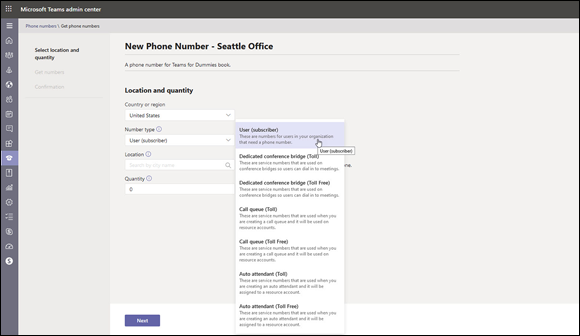
FIGURE 11-7: Selecting the type of phone number to obtain in the Teams Admin Center.
Select a location where this phone number will be based.
If you have already entered locations, you can search and find it in the list. If not, add a new location. This is the physical location for the phone number and is used for things like emergency services when you call 911. I entered our Seattle office as a location, as shown in Figure 11-8.
- Select Save to save the location and then select it as the location for this phone number, as shown in Figure 11-9.
Select the area code from the available options, select the quantity of phone numbers you want to add, and then select Next to continue.
I received an error message saying that there weren’t any more 206 (Seattle) phone numbers available. I then entered a Redmond, Washington, address and obtained a 425 area code so that I could continue. I reached out to Microsoft and learned that new area codes are being added. If you run into issues, I recommend opening a service request in your Office 365 Admin Center under the Support area in the left navigation pane.
 I experienced several problems and errors while trying to set up a new phone number. I had to open a service request support ticket in order to get it resolved. In general, when you run into problems, open a service request. Microsoft has always been fast to respond, in my experience, and the customer service representatives will work with you to get your problem resolved, usually with a same-day turnaround. You can open a service request on your Office 365 Admin Center under the Support area in the left navigation pane.
I experienced several problems and errors while trying to set up a new phone number. I had to open a service request support ticket in order to get it resolved. In general, when you run into problems, open a service request. Microsoft has always been fast to respond, in my experience, and the customer service representatives will work with you to get your problem resolved, usually with a same-day turnaround. You can open a service request on your Office 365 Admin Center under the Support area in the left navigation pane.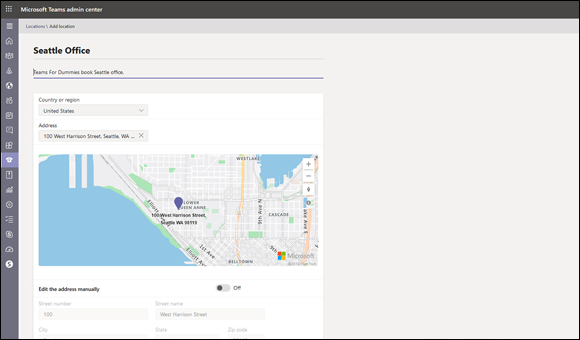
FIGURE 11-8: Adding a location for a phone number in the Teams Admin Center.
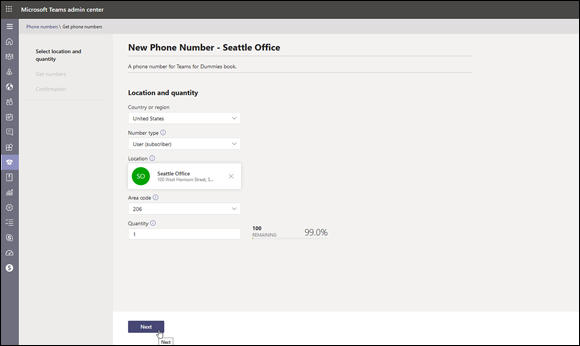
FIGURE 11-9: Filling out the Teams Admin Center page to obtain a new phone number.
Review the number that is assigned and then select Place Order, as shown in Figure 11-10.
Once your new phone number has been provisioned, you will see a confirmation page that lets you know your order has been placed.
Select Finish and your new phone number will be listed on the Phone Numbers page in the Teams Admin Center, as shown in Figure 11-11.
You can now assign the phone number to a Teams user.
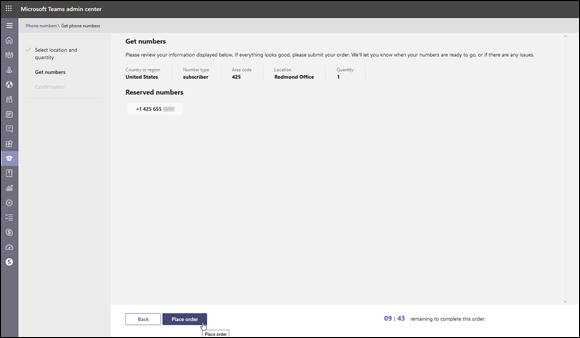
FIGURE 11-10: Placing an order for a new phone number.

FIGURE 11-11: A new phone number in the Teams Admin Center.
Assigning a phone number to a Teams user
When you first obtain a new phone number, it is not assigned to anyone. You can use the Teams Admin Center to assign a phone number to a Teams user.
To assign a phone number to a Teams member, follow these steps:
Log in to the Teams Admin Center, expand the Voice option in the left navigation pane, and choose Phone Numbers (refer back to Figure 11-6).
The Phone Numbers screen appears where all your Teams phone numbers are listed.
Select the phone number you wish to assign and then select Edit.
The Edit pane opens on the right side of the screen.
Search for the user you want to assign to this phone number, as shown in Figure 11-12.
 If you don’t see a specific user when you search, make sure that user has a Calling Plan license assigned. You can do this by selecting the user in the Microsoft 365 or Office 365 Admin Center (see Chapter 1 for a reference on these or Office 365 For Dummies for detailed information) and then checking the box on the correct Calling Plan license, as shown in Figure 11-13.
If you don’t see a specific user when you search, make sure that user has a Calling Plan license assigned. You can do this by selecting the user in the Microsoft 365 or Office 365 Admin Center (see Chapter 1 for a reference on these or Office 365 For Dummies for detailed information) and then checking the box on the correct Calling Plan license, as shown in Figure 11-13.Select the location of this user and then click Apply.
The Teams user is now assigned to the phone number and any calls to it will be routed to that user.
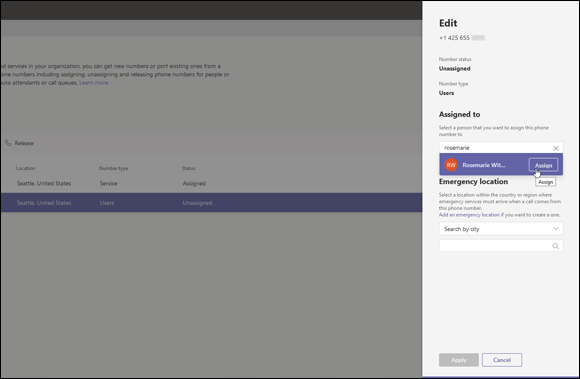
FIGURE 11-12: Assigning a user to a phone number.

FIGURE 11-13: Assigning a calling plan to a user in the Microsoft 365 or Office 365 Admin Center.
Bringing an existing phone number to Teams
If you already have a phone number, you can move it into Teams. The process is similar to obtaining a new phone number; however, you select Port instead of +Add in the Phone Numbers screen of the Teams Admin Center. You can see both options in Figure 11-6. Once you select the Port option, the porting wizard begins, as shown in Figure 11-14. Follow the wizard to bring your existing phone number into Teams. Once the porting is complete, you can then assign it to your Teams user.
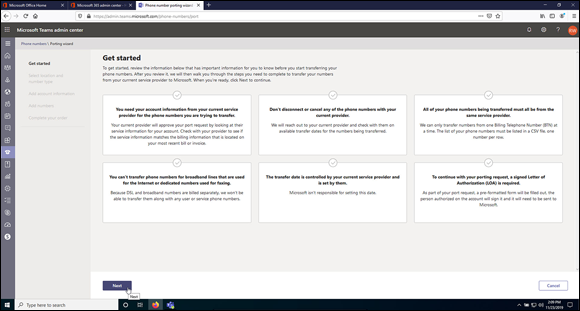
FIGURE 11-14: Bring an existing phone number into Teams with the porting wizard.
Unassigning or changing the phone number assigned to a user
You can unassign or change the phone number that is assigned to a Teams user. This is done on the same page in the Teams Admin Center where you assign a new phone number.
To unassign or change the phone number assigned to a Teams user, follow these steps:
- Log in to the Teams Admin Center, expand the Voice option in the left navigation pane, and choose Phone Numbers (refer back to Figure 11-6).
Select the phone number you wish to unassign from the Teams user and select Edit.
The Edit pane opens on the right side of the screen where you will see the current Teams user the phone number is assigned to (see Figure 11-15).
- Click the X next to that person’s name to unassign the user, and then click Apply to save the changes.
- To assign a different phone number, follow the same process and select the number you want to assign, select Edit, and then assign the Teams user.

FIGURE 11-15: Unassigning a phone number from a Teams user.
Setting Up a Teams Phone
Many organizations I work with still prefer to use a traditional phone to make and receive calls. Several devices have been released specifically for these user preferences.
I cover phones built specifically for Teams in Chapter 10. A Teams phone looks like a regular phone with a display attached to it. One of the options from the Microsoft products web page is shown in Figure 11-16. The phone runs the Teams application, and you log in to Teams just like you would log in to the Teams app on your computer or mobile device.
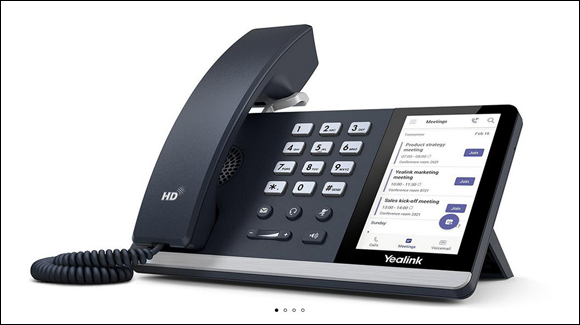
FIGURE 11-16: A Teams phone displayed on the Microsoft products web page.
Once you have logged in to the phone, you can dial a phone number just like you would with any other phone. Or you can use the display screen to select a Teams contact and start a voice call with that person by tapping his or her name. The nice thing about these devices is that you can bring Teams communications to people who would rather use a traditional phone. There is no requirement for any other computing device. Teams is already pre-installed on the phone, and all the person must do is log in to his or her Teams account.

 Modern communication networks can get confusing quickly. To understand them better, it helps to understand how the networks work. Entire volumes of books have been written on networks; however, understanding a few differences is rather straightforward. The Public Switched Telephone Network (PSTN) is a precursor to the Internet and used analog technology that created a route between your phone and someone else’s phone over that network. To identify each device, so that the network knows about it, phone numbers were invented (see the sidebar, “
Modern communication networks can get confusing quickly. To understand them better, it helps to understand how the networks work. Entire volumes of books have been written on networks; however, understanding a few differences is rather straightforward. The Public Switched Telephone Network (PSTN) is a precursor to the Internet and used analog technology that created a route between your phone and someone else’s phone over that network. To identify each device, so that the network knows about it, phone numbers were invented (see the sidebar, “ To use Teams to receive and make calls using a phone number, you need to sign up for a phone service and license. If you don’t sign up for a service, you will only be able to call other Teams users.
To use Teams to receive and make calls using a phone number, you need to sign up for a phone service and license. If you don’t sign up for a service, you will only be able to call other Teams users.